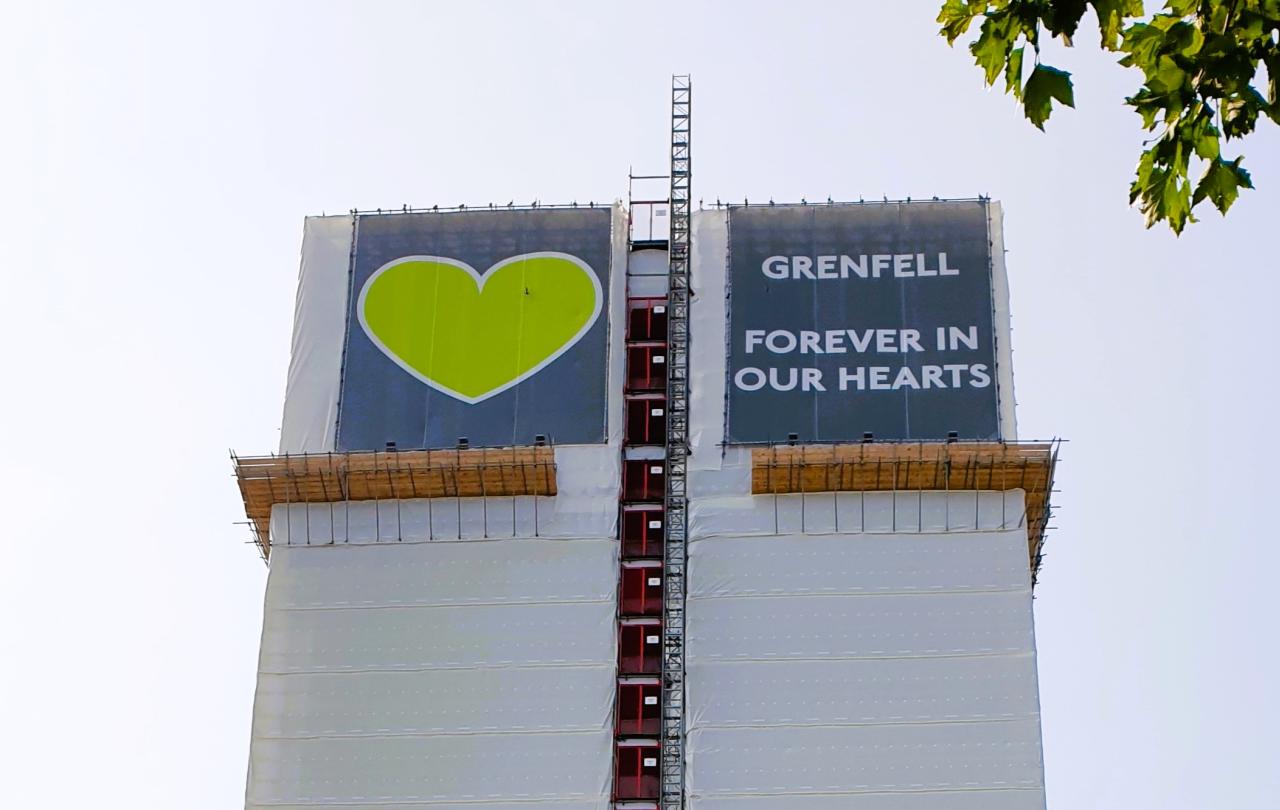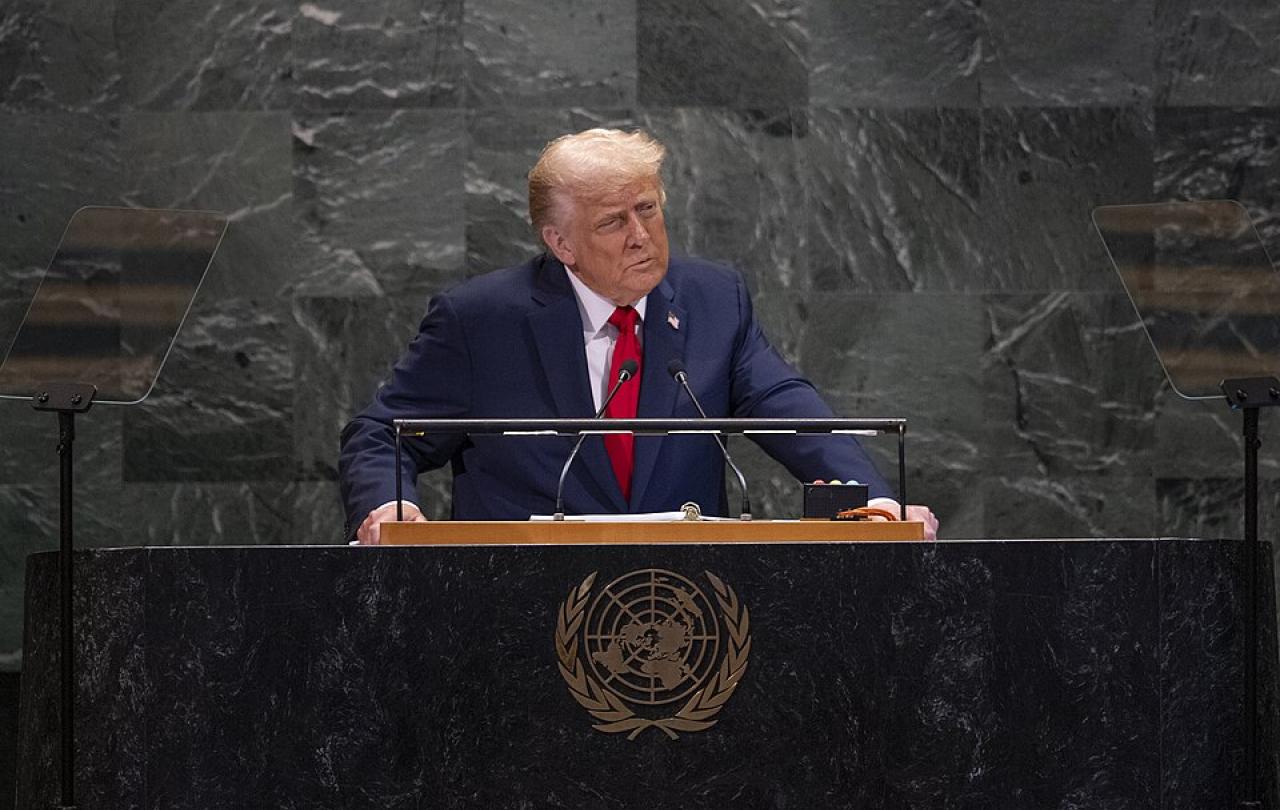
For nearly eight years now, Grenfell Tower has remained standing as a reminder of one of the most painful days in recent British history. The news that the government intends to dismantle the remains of the Tower has split local opinion. Some of the bereaved and survivors suggest that the government has scarcely consulted them. For many, the building is a tomb, still containing the memory, if not the actual remains of their loved ones whose bodies could not be recovered. They understandably fear them being forgotten when the building no longer stands as a reminder. Last year I sat in on a gathering where bereaved families and survivors of the fire told their stories in the hearing of representatives of the companies who were responsible for the cladding which caused the fire to spread. The memories and emotions are still raw and unhealed.
On the other hand, many local residents would like it taken away, as its constant, looming presence is a painful reminder of that dark night. They also see the logic in bringing down a fatally damaged and increasingly dangerous structure that costs the taxpayer millions each year to keep from collapsing under its own weight.
The key issue at the heart of this debate is how we remember - especially, how we remember pain. In the rhetoric around Grenfell, as with many other tragedies, we often hear calls to ‘always remember’ and that we must ‘never forget’ the wrongs done which caused the deaths of those 72 people. The Grenfell Memorial Commission, which was charged with thinking about what memorial should stand on the site of the building in future, claimed as its aim to “make sure the Grenfell tragedy can never be forgotten.”
Such calls to ‘never forget’ are powerful. They seem a proper tribute to those who died, they ensure that those culpable are not let off too easily, and that justice is properly done. To blithely forget such horrendous evils seems an affront to justice, and a morally culpable act.
Yet must we always remember the hurts and pains of the past? Can we imagine a future where such memories fade into the distance and no longer cast their painful shadow over our lives?
Whether and when Grenfell Tower comes down, is yet to be determined. Yet only when we keep in mind the destination of the journey of healing can we make good decisions...
Theologian Miroslav Volf asks all these questions in his book The End of Memory. He describes good and bad ways of remembering. We can remember to cherish the dead, to learn lessons for the future, to ensure justice is done. Yet we can also remember to nurse grievances, to cling onto grudges, to imagine horrible pain inflicted on those who wronged us. Memories of wrongs done to us can imprison and define us purely as victims, never in control, always subject to the actions for others, with no agency of our own.
Volf’s Christian faith tells him that the human race is beckoned towards a new world, in the full presence of God, of what he calls ‘final reconciliation’. It is a place where we will be captivated by a vision of the beauty and goodness of God, a vision that we only dimly glimpse in this world. He asks the question: in such a world, will we remember all the wrongs done to us? Can we imagine still clinging onto the memory of the sins and crimes that others inflicted on us? Even if that were in principle possible, would we remember all the harm done to us? And the harm we did to others? If not, which sins would we remember? Which ones would we forget? Would not such memories blight the joy that such a world would surely offer?
Reflecting on his own youthful and painful memories of interrogation in communist Yugoslavia, and other tragedies such as the 9/11attacks, Volf imagines getting to the point where we don't forget the terrible things that others have done to us, but when we actively don't remember them. They still occupy a place in our minds but are instead relegated to a corner of our consciousness, under our control, no longer rearing their ugly and painful heads when triggered by other events. Such an ability not to remember, he suggests, is a good thing:
"Non-remembrance of wrongs suffered is the gift God will give to those who have been wronged."
At the same time, Volf is careful not to imagine getting to this point too easily. Wrongdoers cannot for a moment insist that those they have wronged forget their misdeeds. Such non-remembrance can only happen when truth has been told, sins punished, and justice done. Yet when all that has taken place, that ‘final reconciliation’, Volf imagines, might even embrace the unimaginable - an ultimate reconciliation between the wronged and the wrongdoers.
Is it possible to imagine children whose parents were killed because of the negligence and culpable cheating of contractors who knowingly put unsafe cladding on Grenfell Tower, ever being reconciled to and even embracing the perpetrators? Volf suggests we can, while recognising that this can only happen when the crime has been identified, fully recognised, repented of profoundly, forgiveness offered and accepted and the appropriate penalty paid.
While such a process remains incomplete, the obligation to remember remains, and reconciliation cannot yet take place. But true healing from such hurts is not to be forever dominated by them, defined by them, or to live in constant enmity and resentment because of them. It is, instead, to gain the strength and ability not to remember them, not to be defined by them, and even - possibly, perhaps - to find reconciliation with their perpetrators.
The Grenfell Public Inquiry that reported last year was an important step for the bereaved and survivors. It was not the end of the journey. Far from it. The process of enacting justice through prosecution of the guilty lies ahead. But as an exercise in truth-telling, in giving perpetrators the opportunity to own up and confess their guilt, in a truthful recognition of what went wrong, it was a vital step towards the possibility of reaching that stage when the memory of Grenfell no longer defines its victims. It opens up the possibility at some point in the future, where they might be in control of their memories rather than their memories controlling them.
The Danish Christian philosopher Søren Kierkegaard once wrote that we humans need to learn both “the art of forgetting” and “the art of remembering”. To know when and how to do one and when to do the other is the gift of God and an art of true wisdom.
Whether and when Grenfell Tower comes down, is yet to be determined. Yet only when we keep in mind the destination of the journey of healing can we make good decisions about such fraught and emotionally charged issues. The Tower cannot remain as it is - everyone acknowledges that . Yet it's hard for many to think about its disappearance without knowing what will replace it. Which is why plans to demolish the Tower must go hand in hand with the plans for the lasting Memorial that will stand on the site. Yet that can only happen if it serves the goal of being able truthfully to remember no longer the pain and injustice of the past.
Join with us - Behind the Seen
Seen & Unseen is free for everyone and is made possible through the generosity of our amazing community of supporters.
If you’re enjoying Seen & Unseen, would you consider making a gift towards our work?
Alongside other benefits (book discounts etc.), you’ll receive an extra fortnightly email from me sharing what I’m reading and my reflections on the ideas that are shaping our times.
Graham Tomlin
Editor-in-Chief





